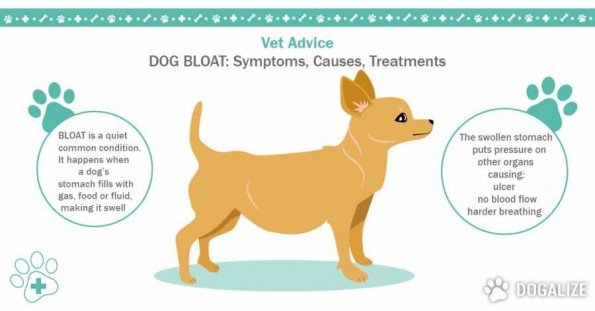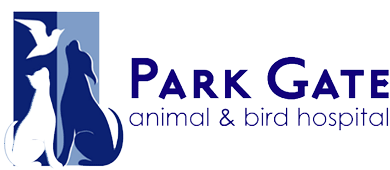
Bloat in dogs is unfortunately a common and often fatal emergency, but there is a way you can prevent it happening.
Bloat in dogs is one of the most soul destroying medical emergencies we see in our vet clinics. One moment the owner has a healthy, happy dog. The next, we are trapped in a life and death battle, where the odds are stacked against us.
What is dog bloat
In the medical world, dog bloat is referred to as Gastric Dilation Volvulus or GDV.
Bloat is where a dog’s stomach first rapidly expands with gas and fluid, and then rotates on itself, twisting off both ends of the stomach. The gas and fluids then start to ferment, pressure builds up and blood supply to the stomach is cut off and a portion or all of the stomach may die.
This triggers a cascade of other problems which can lead to death in just a few hours if left untreated.
Sadly, even with emergency treatment, up to 50 percent of dogs will die if their stomach has twisted.
Which dog breeds are most susceptible to bloat
Some dog breeds are more likely to get bloat than others. Generally these are the larger chested dog breeds including:
-Great danes (studies show 42 percent will get bloat in their lifetime)
-Standard poodles
-German Shepherds
-Blood hounds
-Irish Wolfhounds
-Weimaraner
-Doberman Pinschers
-Rottweiler
-Old English Sheepdog
-Rhodesian Ridgeback
-Labrador Retriever
-Boxer
-St Bernard
-Great Pyrenees
-Collie
-Basset Hound
-Shar-Pei
-Dachshund
Symptoms of bloat in dogs
Bloat develops very suddenly, and occurs more in middle aged or older dogs. Often the dog may have just eaten a large meal, drank a large amount of water or been exercising vigorously before or after eating when the first symptoms of bloat appear.
Five early warning signs of bloat in dogs may include:
1. Your dog is drooling more than usual
2. Your dog is trying to be sick, but not able to vomit
3. Your dog has a tight or swollen stomach
4. Your dog is tired but restless
5. Your dog appears to be uncomfortable or in pain and may groan, whine or grunt – particularly if the stomach is touched or pressed
As the problem progresses, your dog may go into shock, with pale gums and tongue, rapid heart rate, weak pulse, problems breathing and collapse.
If there is any suspicion of bloat, take your pet to the nearest vet hospital. If the stomach has twisted, then emergency surgery is the only option.
Bloat prevention – non-surgical
Unfortunately there is no clinically proven cause for bloat in dogs. There is debate in the industry about genetics, temperament, stress and a host of other factors.
Some of the things you can do to try to prevent your dog from getting bloat include:
-feeding a few times a day rather than just one big meal
-slowing a speedy eater down, using a slow feeding bowl
-not feeding from a raised feeding station or bowl
-not only feeding dry food (or making sure you soak the biscuits first)
-not letting your dog drink too much water at one time
-No heavy exercise just before or just after eating
Bloat prevention – preventative Gastropexy
If your dog is one of the at risk breeds for bloat, has a close family member that has had bloat, or who has a history of stomach bloating, it pays to consider preventative surgery.
Gastropexy is a surgical procedure where the side of a dog’s stomach is stitched to the abdominal wall to prevent the stomach from twisting.
Preventative Gastropexy is performed on a healthy dog before they have a bloat incident. It is not an emergency procedure.
Up until recently, preventative Gastropexy in dogs was a major surgical procedure. However, there is now another option: Laparoscopic Gastropexy.
Commonly called keyhole surgery, Laparoscopic surgery is very common in human operations because it is minimally invasive, is faster and has better healing results. It is now available for pet surgery for selected issues, including bloat prevention.
Benefits of Laparoscopic Gastropexy
-Less invasive and minimal scarring. It only needs a few 0.5 to 1 cm incisions compared to 10-15 cm incisions.
-Shorter surgery and anaesthesia time
-Overnight procedure – your dog can come home the next day
-Much less pain
-Faster recovery
-Less expensive than open surgery
-More reliable than open surgery
When should preventative Gastropexy be done:
Most dogs undergo Laparoscopic Gastropexy at the same time as they are being neutered or spayed. However, if you have an older at risk animal then a standalone surgical procedure can also be performed.
As with any surgery, there are risks and complications that need to be discussed with you vet prior to the procedure being undertaken.
Can a dog still get bloat after Laparoscopic Gastropexy
A Gastropexy simply stops the stomach from twisting, which is the cause of the life endangering symptoms. However, your dog can still get bloat after the surgery, although they will be able to burp and pass excess gas which means you have more time to get to your vet for treatment. It turns a life-threatening emergency into something with significantly less risk.
Questions?
If you are concerned about bloat in your dog and wish to speak to a veterinarian about the possible preventative measures in more detail, feel free to contact ParkGate Animal Hospital by phone (604-929-1863) or appointment for more info – we are happy to answer any questions you may have!

